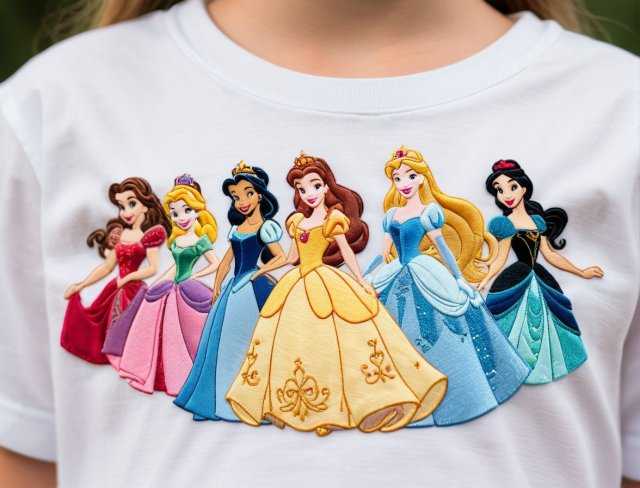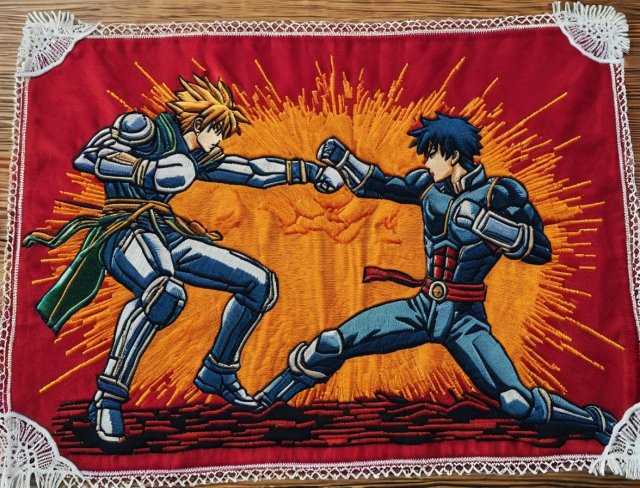From Vision to Stitch
How to Translate Complex Designs into Embroidery
Introduction
Embroidery is a captivating art form that combines creativity with precision, particularly when translating intricate designs into stitched masterpieces. Complex design embroidery poses unique challenges and opportunities, requiring a deep understanding of various techniques and problem solving strategies. This process involves more than just stitching; it encompasses a meticulous approach to design execution, fabric handling, and machine settings, all of which contribute to the final quality of the embroidery.
In this article, we explore the multifaceted world of complex design embroidery, offering insights into how to effectively translate intricate patterns into stunning embroidered pieces. From understanding the nuances of thread selection and tension to mastering the art of design placement and troubleshooting common issues, we provide a comprehensive guide to achieving professional results. By delving into both the technical and creative aspects of complex design embroidery, we aim to equip you with the knowledge and skills needed to bring your most ambitious embroidery projects to life with precision and elegance.
Understanding Complex Design Embroidery
Complex design embroidery is an intricate and nuanced art form that extends beyond simple stitching techniques. It encompasses a variety of elements and principles that must be harmoniously integrated to create visually stunning and technically sound embroidered pieces. At its core, complex design embroidery involves translating detailed and elaborate visual concepts into fabric, requiring a deep understanding of both artistic and technical aspects of the craft.
To appreciate the intricacies of complex design embroidery, one must first understand the foundational components that contribute to its complexity. Complex designs often feature a rich tapestry of elements, including multiple colors, varying stitch types, and intricate patterns. These designs can range from elaborate floral motifs and geometric patterns to detailed portraits and multi layered scenes. Each element within a design contributes to the overall complexity, demanding precise execution and careful planning.
One of the key challenges in complex design embroidery is managing the layering of different stitch types and techniques. For instance, a design may incorporate a combination of fill stitches, satin stitches, and specialty stitches such as French knots or bullion stitches. Each stitch type serves a specific purpose, adding texture, dimension, and detail to the design. The careful selection and application of these stitches are crucial to achieving the desired visual effect and ensuring that the final embroidery is both aesthetically pleasing and durable.
Color management is another critical aspect of complex design embroidery. Complex designs often involve a wide range of colors, requiring careful consideration of thread selection and color placement. The use of gradients, shading, and color blending can add depth and dimension to the design, but it also requires precise control to avoid color bleeding or mismatches. Understanding color theory and how different threads interact with each other and the fabric is essential for achieving a cohesive and vibrant design.

Fabric choice and preparation play a significant role in the success of complex design embroidery. The fabric must be compatible with the design’s requirements, providing the right balance of stability and flexibility. Heavier fabrics may be needed for designs with dense stitching, while lighter fabrics may be suitable for more delicate patterns. Additionally, proper preparation of the fabric, including pre washing, stabilizing, and hooping, is essential to prevent issues such as puckering, shifting, or distortion during the embroidery process.
The process of digitizing a complex design for embroidery is another crucial step that requires a high level of expertise. Digitizing involves converting a visual design into a format that can be read and executed by an embroidery machine. This process includes setting parameters such as stitch types, densities, and underlay stitches to ensure that the design is properly executed. Advanced digitizing techniques may be required for highly detailed or intricate designs, involving the creation of custom stitch patterns and the optimization of design elements for different fabric types.
Understanding complex design embroidery involves a comprehensive grasp of various elements, including stitch techniques, color management, fabric selection, and digitizing. Each of these components must be carefully considered and executed to achieve a successful and visually appealing embroidered piece. By mastering these aspects, embroiderers can effectively translate intricate and detailed designs into fabric, creating beautiful and enduring works of art.
The Art of Translating Vision into Embroidery
Translating a vision into embroidery involves a multifaceted approach that blends creativity with technical proficiency. This process is essential for turning conceptual designs into tangible embroidered pieces that capture the essence of the original vision while adhering to the practical constraints of the embroidery medium. Here, we delve deeper into the stages of this transformation, from initial design conception to the final stitch.
1. Designing the Blueprint
Creating a detailed blueprint is the foundation of translating vision into embroidery. This step begins with a thorough sketching process where the design’s complexity and nuances are carefully mapped out. A successful blueprint not only captures the visual elements but also serves as a roadmap for the entire embroidery process.
During the sketching phase, attention to detail is paramount. The design should be sketched to scale, capturing all intricate patterns and features. This includes not just the overall shape but also smaller details such as textures, shading, and any intricate motifs that are integral to the design. The goal is to create a visual representation that accurately reflects the intended final product.
Once the sketch is complete, it is time to translate this vision into digital form using embroidery design software. This software allows for greater precision and control over the design elements. Advanced programs like Adobe Illustrator or specialized embroidery software such as Wilcom or Hatch enable the designer to refine the design, experiment with different stitch types, and adjust color schemes. The digitization process is critical, as it involves converting the design into a format that an embroidery machine can interpret. This includes setting stitch directions, densities, and underlay stitches to ensure the design is executed with accuracy and quality.

2. Selecting the Appropriate Threads and Fabrics
The choice of threads and fabrics significantly impacts the execution and final appearance of the embroidery. The threads used must complement the design’s colors and textures, while the fabric choice affects how well the design holds up and how it interacts with the stitching.
For complex designs, a range of thread types might be used. For instance, metallic threads can add a luxurious sheen, while variegated threads can introduce gradient effects that enhance the design’s depth. Choosing the right type of thread is crucial; it should be compatible with the design’s requirements and the fabric’s characteristics. High quality threads are less likely to fray or break and will generally yield a more professional and durable result.
Fabric selection is equally important. The fabric must be suitable for the design’s complexity and the stitch density. Heavier fabrics, such as canvas or denim, are often used for designs with dense stitching or large areas of fill. Conversely, lighter fabrics like cotton or silk might be chosen for more delicate or intricate designs. Proper fabric preparation, including pre washing and stabilizing, helps to prevent issues such as puckering or distortion during the embroidery process.
3. Preparing the Design for Embroidery
Preparing the design for embroidery involves several key steps to ensure that it translates effectively from a digital file to a physical embroidered piece. This preparation includes digitizing the design, adjusting machine settings, and performing test stitches.
Digitizing is the process of converting the design into a machine readable format. This step is crucial for ensuring that the embroidery machine executes the design correctly. It involves setting parameters such as stitch types (e.g., satin stitches, fill stitches), densities, and underlay stitches. Each of these elements must be carefully configured to ensure that the design holds its shape and maintains its intended appearance throughout the stitching process.
Before starting the final embroidery, it is essential to perform test stitches on a sample fabric. This test run helps identify any potential issues with the design, such as misalignments, stitch gaps, or color mismatches. By examining the test stitch results, adjustments can be made to optimize the design and address any problems before proceeding with the final piece.
4. Executing the Final Stitch
With the design prepared and tested, the final embroidery process begins. This stage involves carefully setting up the embroidery machine, including threading, hooping, and aligning the fabric. The machine settings must be adjusted according to the design’s specifications, including stitch speed and tension, to ensure a smooth stitching process.
Attention to detail during the stitching process is critical. Monitoring the machine closely can help catch any issues early, such as thread breaks or fabric shifts, which can be addressed promptly to avoid compromising the final result. The quality of the final embroidery is influenced by the precision of the stitching, the quality of the threads and fabric, and the accuracy of the digitized design.

5. Finishing Touches
After the embroidery is complete, the finishing touches are applied. This may include removing any stabilizers, trimming excess threads, and performing any necessary touch ups. The final piece is then evaluated for quality and consistency, ensuring that it meets the original vision and design specifications.
Translating a vision into embroidery involves a comprehensive process that starts with detailed design work and extends through material selection, digitization, and the actual stitching process. By carefully managing each step and paying close attention to detail, embroiderers can effectively bring complex and intricate designs to life, creating beautiful and enduring embroidered pieces that capture the essence of their original vision.
Techniques for Effective Complex Design Embroidery
Achieving effective complex design embroidery requires mastery of various techniques that enhance both the aesthetic quality and structural integrity of the final piece. These techniques not only address the visual appeal of intricate designs but also ensure that they are executed with precision and durability. Here, we explore several advanced techniques that can elevate the quality of complex embroidery projects.
1. Layering and Stabilizing
Layering and stabilizing are fundamental techniques in managing the complexity of embroidery designs. These processes involve using various stabilizers and techniques to support the fabric and ensure that the design maintains its intended shape and detail.
• Stabilizers: Stabilizers play a crucial role in embroidery, especially for complex designs that involve dense stitching or multiple layers. They prevent fabric distortion and ensure that the embroidery remains smooth and accurate. There are several types of stabilizers, including cut away, tear away, and wash away, each serving different purposes. Cut away stabilizers are ideal for designs with heavy stitching, as they provide strong support and prevent the fabric from stretching or warping. Tear away stabilizers are suitable for lighter designs and can be easily removed after stitching. Wash away stabilizers are used for designs that require a clean finish with no visible stabilizer remnants.
• Layering Techniques: Layering involves adding multiple layers of fabric or stabilizer to achieve depth and texture in the design. This technique is particularly useful for designs with intricate details or dimensional elements. By layering different materials, such as fabrics or thread types, embroiderers can create a rich, multi dimensional effect. For example, using appliqué techniques with layered fabrics can add visual interest and enhance the design’s complexity.

2. Managing Thread Tensions
Proper thread tension is essential for achieving clean and precise stitches, especially in complex designs where multiple thread colors and types are used. Managing thread tensions involves adjusting the machine’s settings and ensuring that the threads work harmoniously with the fabric.
• Adjusting Tension: Each embroidery machine has specific settings for thread tension, which need to be adjusted according to the type of thread and fabric being used. Inconsistent tension can result in problems such as thread breakage, uneven stitches, or puckering. To achieve optimal tension, start by testing the machine on a sample fabric, adjusting the tension settings until the stitches are even and smooth. It’s also important to regularly check the tension throughout the stitching process, as variations can occur with different thread types and fabric conditions.
• Thread Quality: The quality of the threads used in embroidery affects both the appearance and durability of the design. High quality threads are less likely to fray, break, or cause issues such as color bleeding. When working with complex designs, it’s essential to use threads that are compatible with the fabric and design requirements. For example, metallic threads may require specific tension settings and techniques to prevent breakage and achieve a smooth finish.
3. Utilizing Advanced Stitch Techniques
Advanced stitch techniques can significantly enhance the complexity and visual impact of embroidery designs. These techniques include specialized stitches and methods that add texture, dimension, and detail to the design.
• Fill Stitches: Fill stitches are used to cover larger areas of the design, providing a solid, textured background. They can be created using various patterns, such as satin stitches, column stitches, or contour stitches. The choice of fill stitch pattern can affect the design’s overall appearance, adding depth and interest. Experimenting with different fill stitch patterns and densities can help achieve the desired effect and ensure that the design looks cohesive and well executed.
• Appliqué: Appliqué is a technique that involves stitching fabric pieces onto the base fabric to create additional layers and textures. This method is particularly effective for adding intricate details and dimensional elements to complex designs. Appliqué can be used to highlight specific areas of the design or create contrast with different fabrics or thread colors. Techniques such as raw edge appliqué or satin stitched appliqué can be employed depending on the design’s requirements and desired finish.
• 3D Embroidery: 3D embroidery techniques add a raised, dimensional effect to the design, creating a tactile and visually striking appearance. Techniques such as foam padding, fabric manipulation, or thread manipulation can be used to achieve a 3D effect. For example, adding a layer of foam beneath the embroidery can create a raised, padded effect, while manipulating the thread to create texture and dimension can enhance the design’s visual impact.

4. Applying Specialty Threads and Effects
Incorporating specialty threads and effects can elevate the complexity and allure of embroidery designs. Specialty threads add unique textures and finishes that enhance the overall design.
• Metallic Threads: Metallic threads provide a shiny, reflective finish that can add a touch of luxury and sophistication to the design. They are often used for accents, highlights, or intricate details. Working with metallic threads requires careful attention to tension settings and thread handling to prevent breakage and achieve a smooth, even finish.
• Variegated Threads: Variegated threads feature a blend of multiple colors in a single thread, creating a gradient or multi colored effect. These threads are ideal for designs that require color transitions or shading. The varying colors within the thread can create a dynamic and visually interesting effect, adding depth and complexity to the design.
• Glow in the Dark and Reflective Threads: Specialty threads such as glow in the dark or reflective threads can add unique effects to the design. Glow in the dark threads are used for designs that need to stand out in low light conditions, while reflective threads provide visibility and safety in dark environments. These threads require specific handling and stitching techniques to ensure that they perform as intended.
5. Finishing and Quality Control
The final stage of complex design embroidery involves finishing touches and quality control to ensure that the design meets the highest standards.
• Removing Stabilizers: After the embroidery is complete, stabilizers must be carefully removed. Depending on the type of stabilizer used, this may involve tearing away excess stabilizer, washing away soluble stabilizers, or cutting away residual stabilizers. Proper removal ensures a clean finish and prevents any remnants from affecting the design’s appearance.
• Thread Trimming and Clean Up: Excess threads and any loose ends should be trimmed to ensure a polished and professional appearance. This step also involves checking for any missed stitches or areas that require touch ups. Inspect the design thoroughly to ensure that all elements are correctly executed and that the final piece meets the desired quality.
Effective complex design embroidery requires a deep understanding of various techniques, including layering and stabilizing, managing thread tensions, utilizing advanced stitch techniques, and applying specialty threads and effects. By mastering these techniques and paying attention to detail, embroiderers can create intricate and visually stunning designs that showcase their skill and creativity.

Common Challenges and Solutions
Embroidery projects, particularly those involving complex designs, often present a range of challenges. Overcoming these challenges requires both skill and strategic problem solving. Here, we delve deeper into several common issues faced in complex design embroidery and provide detailed solutions to address them effectively.
1. Thread Breakage and Tension Issues
Thread breakage is a significant concern in embroidery, particularly with intricate designs that involve multiple thread colors and types. Breakage can result from improper thread tension, poor quality threads, or mechanical problems within the embroidery machine.
To prevent thread breakage, start by ensuring that the thread tension is properly adjusted. Each type of thread, whether polyester, cotton, or specialty threads, requires different tension settings. Adjust the tension using the machine’s controls, and always test on a sample fabric to fine tune the settings. High quality threads designed for specific types of embroidery can prevent frequent breakage and ensure smoother stitching. Regular maintenance of the embroidery machine is also critical; this includes cleaning the bobbin case, replacing worn parts, and ensuring that the thread paths are clear and free from snags. Additionally, using thread nets or guides can help prevent the thread from unraveling or tangling, reducing the risk of breakage.
2. Fabric Puckering and Distortion
Fabric puckering and distortion occur when the fabric gathers or wrinkles during the embroidery process. This problem is often exacerbated by the density of the design, the type of fabric, or inadequate stabilizer use.
To minimize puckering, use the correct type and amount of stabilizer. For dense or intricate designs, a cut away stabilizer provides strong support and helps maintain the fabric’s shape. Ensure that the fabric is properly hooped and aligned to avoid shifting during the embroidery process. Pre washing the fabric before embroidery can remove any sizing or finishes that might cause puckering. Additionally, adjusting the stitch density or the design’s fill pattern can help reduce the fabric’s stress and prevent distortion. If puckering occurs, gently pressing the fabric with a steam iron (without touching the embroidery) can help smooth out the areas.
3. Color Bleeding and Mismatch
Color bleeding and mismatches can significantly impact the visual appeal of an embroidered design. Color bleeding happens when dyes from threads or fabrics transfer to adjacent areas, while color mismatch occurs when thread colors do not align with the design’s intended palette.
To prevent color bleeding, use colorfast threads and pre wash fabrics to remove any excess dye. When choosing threads, select those known for their color stability and resistance to bleeding. Conducting a test stitch on a sample piece can help identify any potential color issues before starting the final project. If color bleeding does occur, using a color catcher sheet in the wash can absorb excess dye. For color mismatches, compare the thread colors with the design’s palette before starting the embroidery. Adjust thread choices based on test results to ensure that the colors match as closely as possible.

4. Misalignment and Design Shifts
Misalignment and design shifts are common issues in embroidery, particularly when the design is complex and requires precise placement. Misalignment can lead to crooked designs or uneven stitching, detracting from the final product’s quality.
Ensure that the fabric is properly hooped and aligned with the design before beginning the embroidery. Use alignment tools or markings to position the fabric accurately within the hoop. Checking the fabric’s alignment during the stitching process can help catch any shifts early and allow for prompt correction. If misalignment persists, re evaluate the hooping technique and make adjustments to ensure a secure and stable fabric hold. Additionally, using a hooping jig or alignment guide can aid in achieving precise placement.
5. Inconsistent Stitch Quality
Inconsistent stitch quality, such as uneven stitching or visible gaps, can arise from various factors including machine settings, thread quality, or errors in digitizing the design. This issue can affect both the appearance and functionality of the embroidery.
To achieve consistent stitch quality, regularly check and adjust the machine’s settings including stitch length, density, and tension. Using high quality threads and ensuring they are correctly threaded through the machine can also improve stitch consistency. Review the digitized design to ensure that stitch types and densities are correctly configured. Performing test stitches on a sample fabric allows you to identify and correct any issues before proceeding with the final embroidery. Consistent monitoring of the stitching process and making necessary adjustments as needed can help maintain high quality results.
6. Complexity in Design Execution
Executing complex designs can be challenging due to the intricacy and multitude of elements involved. Problems such as overlapping stitches or misaligned components can occur, particularly with highly detailed designs.
Break down the design into manageable sections to simplify the embroidery process. Focus on one segment at a time, ensuring accuracy and consistency before moving to the next. Utilize advanced digitizing software to optimize the design for the embroidery machine, including adjusting stitch order, simplifying intricate details, and adding support stitches where needed. Conducting test stitches and making iterative adjustments based on the test results can help ensure that each section of the design is correctly executed. Patience and attention to detail during the stitching process can help overcome challenges related to design complexity.

7. Fabric Compatibility and Handling
Different fabrics behave differently during embroidery, and choosing the wrong type of fabric or handling it improperly can lead to issues such as puckering, shifting, or thread tension problems.
Select fabrics that are compatible with the design’s complexity and the type of stitches being used. Heavier fabrics may be suitable for designs with dense stitching, while lighter fabrics may be better for more delicate patterns. Ensure proper fabric preparation, including pre washing and pressing, to remove any finishes or sizing that could affect the embroidery. Using appropriate stabilizers for the fabric type can help maintain stability and prevent issues during stitching. Additionally, testing the embroidery on a fabric scrap can provide insights into how the fabric will behave and allow for adjustments before starting the final project.
8. Design Size and Scaling Issues
Scaling issues can arise when enlarging or reducing a design, leading to distortions or loss of detail. Proper scaling is crucial for maintaining the design’s integrity and ensuring that it fits well within the intended space.
When scaling a design, use vector based design software that allows for precise adjustments without losing detail. Ensure that the design’s elements are resized proportionally to maintain their appearance and alignment. Perform test stitches at the new size to evaluate how the design translates to different dimensions. If scaling issues occur, make necessary adjustments to the design or stitching parameters to address any distortions or loss of detail.
Overcoming challenges in complex design embroidery requires a combination of technical skills, careful planning, and problem solving. By addressing issues such as thread breakage, fabric puckering, color bleeding, misalignment, inconsistent stitch quality, design complexity, fabric compatibility, and scaling, embroiderers can achieve high quality results and bring intricate designs to life. Through diligent preparation, testing, and adjustment, these common challenges can be managed effectively, ensuring that each embroidery project meets the desired standards of excellence.

Conclusion
Mastering complex design embroidery involves a deep understanding of both the techniques and challenges associated with translating intricate designs into beautiful stitched creations. By focusing on key elements such as effective layering and stabilizing, managing thread tensions, utilizing advanced stitch techniques, and applying specialty threads, embroiderers can enhance the quality and precision of their work. Each of these techniques plays a crucial role in achieving a polished and professional outcome, ensuring that complex designs are executed with finesse and attention to detail.
In addition to technical proficiency, addressing common challenges such as thread breakage, fabric puckering, and color bleeding is essential for successful embroidery. By implementing practical solutions and maintaining meticulous quality control, embroiderers can overcome these obstacles and achieve high quality results. Whether working on intricate patterns or large scale projects, the skills and strategies outlined in this article provide a solid foundation for translating complex designs into stunning embroidery. With practice and attention to detail, embroiderers can turn their creative visions into beautifully executed pieces that stand out for their craftsmanship and artistry.
Now that you have read through this article, feel free to SHOP for products we have created. If you are looking for something special which isn’t in our store, feel free to contact us.










